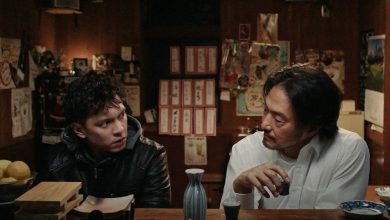MANILA, PHILIPPINES — In the long and storied history of Walt Disney Animation Studios, it has presented fairy tales from a decidedly Western point of view. Starting with tales from the Brothers Grimm in Snow White and the Seven Dwarfs and Sleeping Beauty, Hans Christian Andersen stories were also later adapted by the studio resulting in The Little Mermaid and Frozen.
Over the decades, however, as the world has gotten smaller figuratively, representation of other cultures had not yet been evident in the Disney catalogue. This only began to change with the release of Mulan in 1998 and The Princess and the Frog in 2009. In 2021 though, for the first time ever, people from Southeast Asia could finally watch an animated film from Disney and see faces that look like their own. That is the gift that is Raya and the Last Dragon.
When the mythical paradise of Kumandra is attacked by the evil spirits known as the Druun, every person the Druun hit is turned into stone even as their numbers increase. The gathered dragons of Kumandra combine their powers into one gem that the last of the dragons, Sisu (Awkwafina), uses to revive the people. As the people of Kumandra fight over the dragon gem, it divides the land based on their places along a river that resembles a dragon: Fang, Heart, Talon, Spine, and Tail.
Five hundred years after the division of Kumandra, Chief Benja (Daniel Dae Kim) of the Heart tribe is training his daughter, Raya (Kelly Marie Tran), to become the guardian of the Dragon Gem. Chief Benja invites all the tribes to a feast because he believes the Kumandra can be united once more. As Raya becomes friends with Namaari, the daughter of the chief of Fang because of their shared interest in dragons.
To repay Namaari for giving her a dragon pendant, Raya takes Namaari to where the Dragon Gem is kept. Unfortunately, Namaari betrays Raya as soldiers of Fang try to take the gem. The gem is shattered with every tribe taking a piece and the Druun are free once more. As Chief Benja sacrifices himself to save Raya, he tells her not to give up on the tribes. After six years of looking for where Sisu was last seen, Raya finally finds the dragon and begins the difficult task of not just rebuilding the gem and freeing those turned to stone, but also reunifying Kumandra.
As its own entity separate from Pixar Animation, it has actually been two years since Walt Disney Animation Studios released a motion picture, and that was Frozen II. Originally scheduled for release last November, Raya and the Last Dragon was yet another victim of the pandemic, delaying it by four months. The wait, however, was well worth it.
With an original story that was inspired by Southeast Asian countries like the Philippines, Indonesia, Malaysia, Thailand, Cambodia, Vietnam, Laos, and Myanmar, the characters onscreen have a decidedly brown skin pigmentation as most of the people in those countries do. Although the voice cast was almost completely Asian, only a couple were actually Southeast Asian.
Still, there is a clear effort to represent the cultures in the region as evidenced by the architecture, clothes, the plants, and the types of food that are shown in the film. Directors Don Hall and Carlos Lopez Estrada were able to bring those critical elements into this motion picture to give it some form of authenticity despite the myth and story being an original Disney creation.
Tran, whose appearances in the most recent Star Wars films have not been so pleasant for her, shines as the independent and fiery Raya. The betrayal that she suffered in childhood not only resulted in her separation from her father and the unleashing of the Druun, it also leaves Raya with severe trust issues that give her a more pessimistic view of the world around her. It is through her interactions with Boun (Izaac Wang) of Tail, Tong (Benedict Wong) of Spine, Noi (Thalia Tran) and her three Ongis, and especially with the hopeful and slightly naïve Sisu that Raya finally learns to open herself once more to others.
At the core of Raya and the Last Dragon is a story of parental love similar to those seen in many other Disney films of the past. Yet an even more critical element in this film is the simple need for trust between people, even when that trust isn’t necessarily easy to give. It is perhaps even more important today, in the world we live in where so much fake news and false stories are rampant everywhere, that we find things that we can trust and have faith in, just like Raya needed to learn to trust the people around her.










